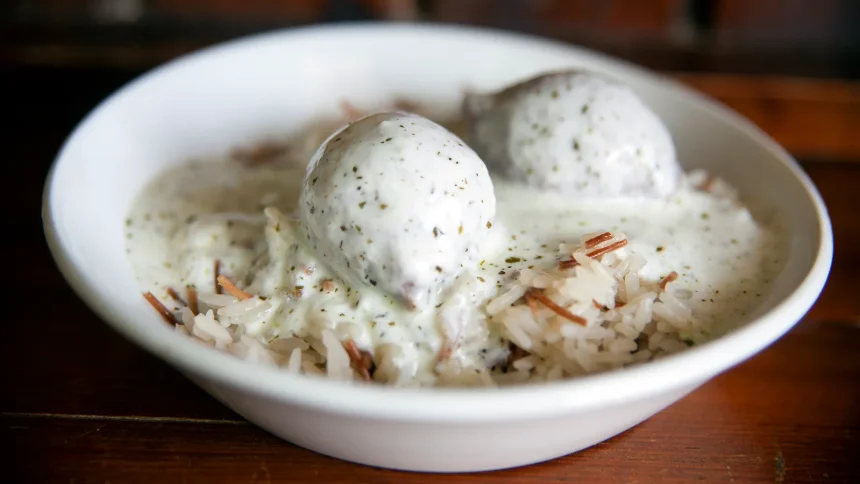Barbara Massaad’s cookbook, Forever Beirut, shares a recipe for meatballs in yoghurt sauce that is served in Lebanon on New Year’s Day.On New Year’s Day, family tables in Lebanon offer kibbeh labaniyeh, a hearty dish of meatballs in a thick sauce of mint yogurt, to celebrate the start of a new year. Kibbeh labaniyeh is “comfort food with a capital C” according to Barbara Massaad, the head of Slow cuisine Beirut, culinary consultant, and award-winning cookbook author. From her Beirut home, Massaad said, “My kids always make fun of me because I say it ten times when we’re eating it.” She was cracking eggs into a pan of warm yoghurt. “Kibbeh Labaniyeh is really good—it’s pure white. Dairy products are nourishing and tasty in every way.”

“It nourishes the soul, you really feel good when you’re eating it,” Massaad said, as she delicately transferred the kibbeh balls into the yoghurt sauce.
Massaad, who spends much of her time in rural Lebanon with local food producers, believes kibbeh labaniyeh may have originated in east Lebanon’s fertile Bekaa Valley where cow’s milk is abundant. But there are many different kibbeh dishes throughout the diverse regions of Lebanon, including vegetarian versions and ones that consist of raw meat. Kibbeh balls alone are an integral part of the Lebanese mezze table, almost always on offer at gatherings.
The meatballs for kibbeh labaniyeh are formed from a shell of bulgur that is spiced with allspice, cinnamon, cumin and black pepper and then stuffed with minced meat and pine nuts.
Shaping the balls takes practice – it’s an art – and once you form the perfect football-shaped kibbeh that doesn’t crack, the satisfaction is immense. Making sure your hands are wet when moulding the balls helps a great deal.
In some Lebanese homes, they order kibbeh labaniyah and place large amounts in the freezer to take out when needed. This means they can make kibbeh labaniyeh in only half an hour; the meatballs can be baked from frozen until the outer layer is slightly crisp.
Using dried mint for the sauce (rather than fresh) adds an extra punch, and Massaad suggests allowing the yoghurt to come to room temperature before cooking it. “You don’t want to shock the yoghurt – [adding it] from the fridge to the cooking pan immediately is a no no,” she said.
When cooking the yoghurt sauce, it is important to add egg if using cow’s milk yoghurt, otherwise the dairy will curdle and become lumpy. As you cook it, Massaad explained, “You need to thicken it like a sauce – you don’t want it to be watery.”
The thick sauce collects on the rice as it is served, and the bulgur shell soaks up the fluffy yoghurt, melding with the stuffing. The dish is surely heavy, but in a wholesome, fulfilling way, preparing you for the year ahead.







